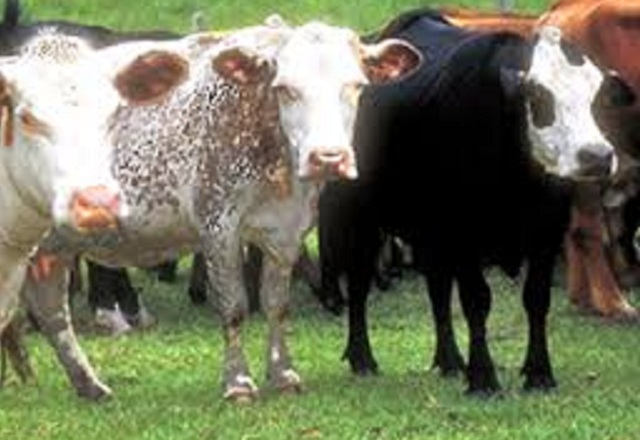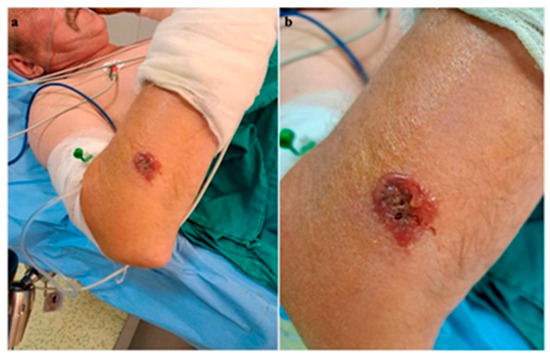Must-Read: FG raises alarm over anthrax outbreak death of humans and animals. The federal government has cautioned Nigerians who use animal hide to be more careful while they continue in the business or agricultural business.
This business was handled down in 2023 when there was an outbreak of Anthrax in Ghana and some parts of Nigeria, leading to the loss of lives.
In light of this, we have decided to explain Anthrax disease and ways to prevent its spread.
Table of Contents
What does it mean?
Anthrax is a serious infectious disease caused by the bacterium Bacillus anthracis. It affects both humans and animals, especially livestock like cattle, sheep, and goats. The bacteria produce spores that can survive for many years in soil, making the disease persistent in some areas.
Anthrax can appear in different forms: cutaneous (skin), inhalation (lungs), gastrointestinal (digestive system), and injection-related. It is not contagious between people but can spread through contaminated sources.
The disease can be fatal if untreated, particularly inhalation anthrax, but with early detection and proper treatment, recovery is possible. It is found worldwide but is more common in agricultural regions.
How is it contacted?
Anthrax is contracted when the spores of Bacillus anthracis enter the body through skin cuts, inhalation, or ingestion. People can be exposed by handling infected animals, animal products like wool, hides, or meat, or by working in contaminated environments.

Cutaneous anthrax occurs when spores enter broken skin, inhalation anthrax when spores are breathed in, and gastrointestinal anthrax when contaminated meat is eaten. Rarely, anthrax can result from injection of contaminated drugs.
The bacteria’s spores are highly resistant, allowing them to survive in soil and on surfaces for decades, making infection possible long after initial contamination of an area.
What are the symptoms and signs of Anthrax infection?
Anthrax symptoms vary depending on the type of infection. Cutaneous anthrax causes a painless sore with a black center after an itchy bump or blister appears. Inhalation anthrax begins with flu-like symptoms such as fever, cough, fatigue, and chest discomfort, then progresses to breathing difficulties and shock.
Gastrointestinal anthrax may cause nausea, vomiting, severe diarrhea, abdominal pain, and fever. Injection anthrax leads to swelling, abscesses, and infection deep under the skin.
Symptoms can appear within hours to days after exposure. Without treatment, anthrax can progress rapidly and cause severe complications, including death, making early detection and medical care essential.
What is the cure?
Anthrax can be treated effectively if detected early. The main treatment is antibiotics such as ciprofloxacin, doxycycline, or penicillin, given orally or intravenously depending on the severity.
For inhalation anthrax or severe cases, combination therapy may include multiple antibiotics and antitoxin medications that target the bacteria’s toxins. Early medical attention is critical because once anthrax toxins spread in the body, they can cause severe damage.
Supportive care in hospitals, such as oxygen therapy and fluids, may also be necessary. With prompt diagnosis and proper treatment, most patients recover, but delayed treatment, especially for inhalation anthrax, greatly increases the risk of death.
How to prevent Anthrax disease?
Prevention of anthrax involves reducing exposure to Bacillus anthracis spores. For people in high-risk occupations like farmers, veterinarians, or wool workers, wearing protective clothing, gloves, and masks is important. Livestock vaccination in endemic areas greatly reduces animal infection, thus lowering human risk.
Proper disposal or burning of infected animal carcasses prevents environmental contamination. Avoiding consuming meat from sick animals is also crucial.
In certain situations, such as for military personnel or laboratory workers, an anthrax vaccine may be recommended. Public health education and quick reporting of suspected cases help control outbreaks and protect both humans and animals from the disease.
Conclusion on Anthrax outbreak
Prevention is better than cure. The best way to avoid Anthrax disease is to prevent the disease in the first place. Doing the above-stated can go a long way to protect you from being infected. See more from TrendingOffice.

